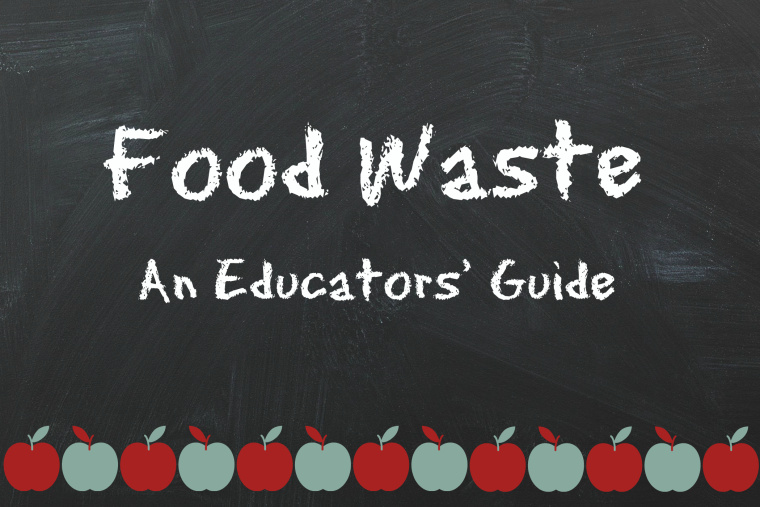"Waste not, want not." "Clean your plate." "Take What You’ll Eat and Eat What You Take." Many of us heard those expressions growing up and may even repeat them to our own kids. Yet, those warnings have gone unheeded. We waste a lot of food in America. In fact, 40% of all edible food in the United States gets tossed. The impact is staggering—from water and energy loss to rotten food and packaging clogging our landfills leading to increased greenhouse gas emissions. Lessons learned early in life can prompt a lifetime of smart habits, so let's help students become food waste aware. This document is a guide to teaching students about food waste, with conversation starters, lessons and activities suitable for grades K-12. Hopefully, it will spark student--and maybe even teacher--interest and insights, because we all have to pitch in to prevent food waste.
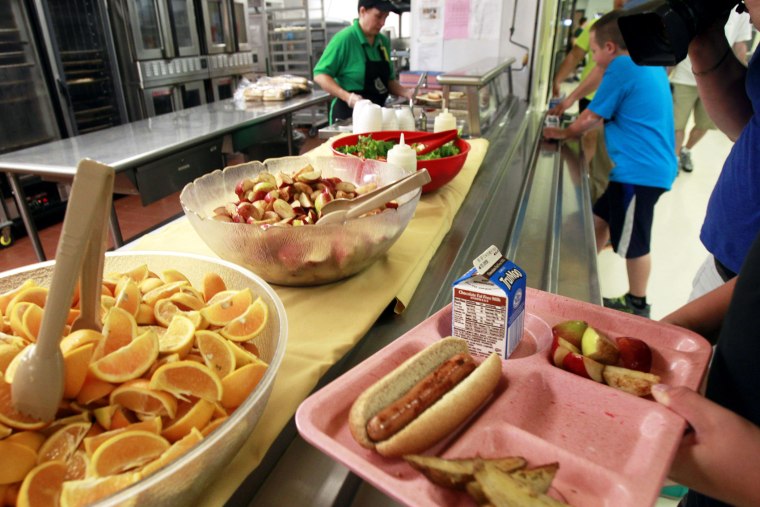
Discussion Guide/Conversation Starters:
Elementary School:
- Do you usually eat all of your lunch? If not, what are the reasons why?
- When you buy lunch at school, why do you think you have to take certain items?
- Can you think of a way to reduce the amount of food wasted in schools?
Middle School:
- Where does your trash go?
- What is composting and what are its benefits?
- What do “Best By” dates mean? Have you ever eaten anything after it is past that date? (And lived to tell the tale!)
High School:
- If the average food item has to travel 1500 miles, what are some of the benefits of growing your own food? Who has grown some of your own food or bought items at the farmers market? What did you learn? Were there any surprises? How did the quality and cost compare to food bought in a grocery store?
- Why do you think so much food is wasted in America?
- Why is it important not to waste food? Consider: ethics, environment, economy etc.
“What parts can you eat?”
Lesson: Easy show and tell demonstration with younger students regarding which parts of produce are edible as well as some creative ways to use them. Items needed: any fruits/vegetables that traditionally have parts that go unused. For example, carrots (peelings/tops), potato (skin), radish/beets (greens) or kale (ribs).
Sample script: We all know that carrots are yummy if you cut off the green top, and peel the outer layer. But maybe that’s not the best way to eat them.
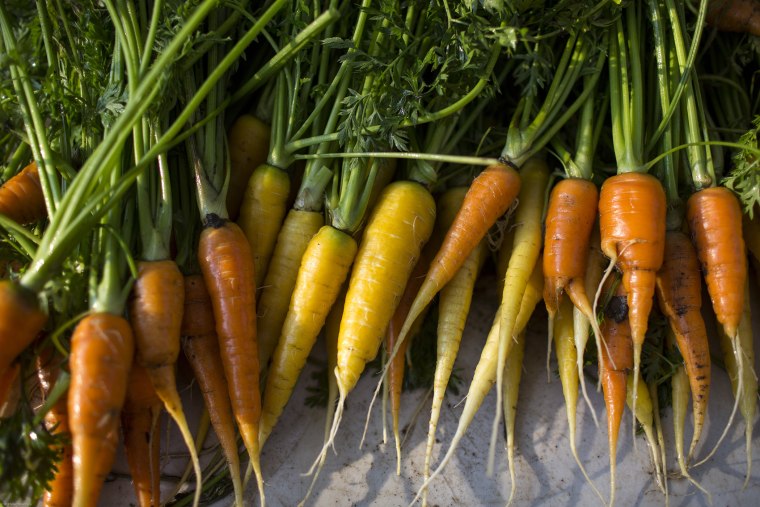
What parts of carrots or broccoli do we usually throw away? Can you suggest some ways we might make use of those parts? Guidance: Carrot greens can be eaten several ways, whether they are a topping for a salad, sautéed with oil and garlic or made into a pesto. At the very least, they make a great treat for pet rabbits and guinea pigs. The peels can be used in soup/stock. And carrots often only need a good washing before eating, no peeling. The same goes for potatoes and sweet potatoes. (And did you know the most nutritious part of the potato is the skin?) Broccoli stalks are also good to eat used in stir fries, soups/stock and slaws. You may or may not like beets or radishes, but their green leaves (the part that grows above the ground) are delicious, either sautéed or raw in a salad.
Activity: Do a taste test comparing peeled and unpeeled carrots. Let students try some broccoli stalks or beet greens (cooked or uncooked). Encourage students to try some of the techniques at home and report back what they find.
Activity: Show video of someone eating an apple (from the bottom.) Is there such a thing as an apple core (or is that a social construct?) Would you try this? (See if students will try, spitting out the seeds.)
Activity: Try eating the peel of a kiwi fruit. How does it taste and feel?
“Celebrate Individuality Taste Tests” (Beauty is on the Inside!)
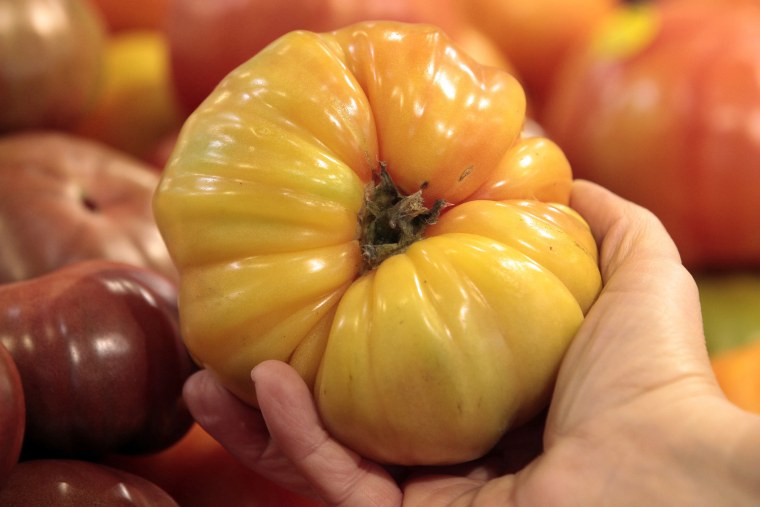
Lesson: We all know it’s not respectful to single out people for being different. We should celebrate our individuality. Well, it’s no different with fruits and veggies! Just because a piece of produce looks different, doesn’t mean it tastes worse. It may actually taste better. (Especially those tomatoes! And older fruits are often sweeter as they have high sugar content.)
Sample script: Did you know that most baby carrots come from odd-shaped carrots that have been whittled down by a machine? The baby carrot is the core of the carrot. This method both avoids and causes waste. Can you think of how that happens? Guidance: Utilizing misshapen carrots helps prevent throwing them away but much of those misshapen carrots are wasted in the reshaping.
Activity: Find an odd-shaped or even blemished carrot and cut it open to reveal a “normal” looking interior. Have the class to do a taste test of “ugly” produce compared to traditional items. They can even use blindfolds. Is there a difference? Ask the class to vote on which tastes better. This activity can be repeated using various fruits including bananas, apples, peaches and vegetables such as carrots, potatoes, peppers. Encourage students to try the taste test at home with their families.
Activity: Show students that one blemish or bruise doesn’t ruin a piece of fruit. Find a blemished fruit or vegetable (pears, apples, bananas all work well). Cut the fruit in half to show that the bruise doesn’t go all the way through. Then pare away the rotten part and ask students if they’d like to taste the remainder.
“Do the Ripe Thing!” Smoothies and Muffins
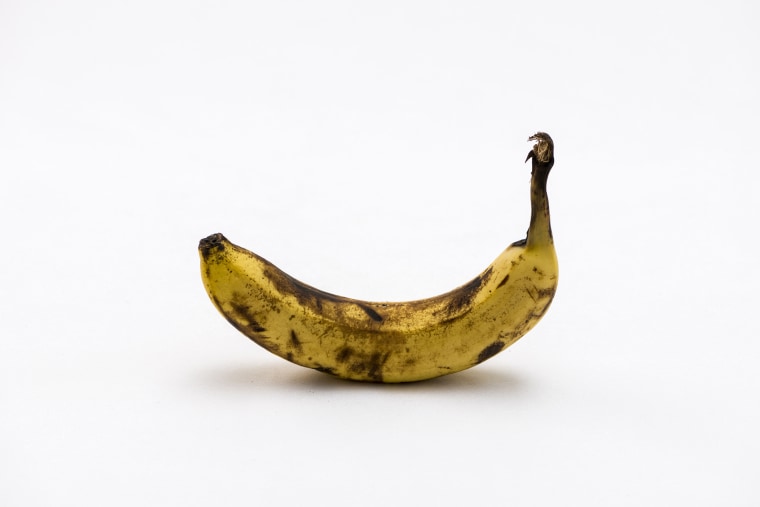
Lesson: Focus on the multiple uses of our foods and the importance of planning in reducing waste. A loaf of bread at one meal can become croutons for the next day and bread crumbs after that. Produce does not have to look pristine to be consumed and, in fact, riper fruits and veggies often make better components for juices, smoothies and baked goods.
Sample script: Overripe (or, as some call it… ripe) fruit may not look as appealing as we’d like but mixed into a smoothie or breads and muffins they actually offer a few advantages. First, it cuts down on food waste. And second, overripe fruit often is sweeter than the “fresher” stuff.
Activity: Ask students to look up (or provide) simple smoothie and muffin recipes. Prepare the food together if possible or ask students to try the recipes at home and report back, or bring in samples!
“School Food Waste Audit”
Lesson: Habits are formed early in life. From their first school lunch experiences many children learn to throw away part or all of their lunches. Most students aren’t taught that wasting food has consequences beyond a parent worried they aren’t getting the nutrients they need. There are many lessons students can learn here about the environment, society, the economy and ethics.
Sample script: Students are notoriously picky eaters. But with one billion people who are hungry on our planet (including in each of our communities) we can do a better job of not wasting food. What are some of the reasons that you throw away food that could be eaten? What are some ways you can think of that we can reduce the amount of food we waste at school? (Students can take an active part in packing foods they’ll eat. They can request portion sizes they can manage.) Talk with students about where the wasted food will go and why that’s harmful. (Landfill. Greenhouse gas emissions. Serious stuff.)
Activity: Work with your school’s cafeteria to weigh the food that is thrown away at the end of each lunch period. Next, have students catalog what kinds of food are being wasted. At the end of one or two weeks have the students report their findings (in a report or chart). Find ways to challenge each class to try to lessen the amount each week. Combine lessons of nutrition, language arts, science and math. If students are interested in doing something about this work, they can contact the non-profit Food Bus or partner with a local food relief agency to establish a “food rescue” operation.
“Home Food Waste Audit”
Lesson: The average four-person household throws away more than $1500 in food every year. And we don’t eat about 25 percent of the food we bring home. Families can dramatically minimize this waste just by becoming more aware of what they’re tossing.
Sample Script: What are some of the ways we all waste food at home? (Not finishing food on plate, edible waste created during food preparation, expired food)
Activity: Have students log all of the food wasted in their home (either thrown away, put down the disposal or composted) for one week. Have them draw conclusions regarding what they saw. Discuss ways they can make changes to reduce waste.
#NoFoodWasted Pledge
Lesson: Kids love a challenge! And this challenge can inspire students to make a lifelong commitment to reducing food waste.
Sample script: What are the ways we can pledge to reduce food waste in school and at home? (There are many sample lists -- including this example from the NRDC -- but ensure student “buy-in” by allowing them to be creative.) Create a formatted version of the list the students create and ask them to check which tasks they pledge to follow and have them sign their pledge. Or use the version we’ve created
If you’d like additional information on school food waste and what educators and students can do, check out this guide from the USDA.
